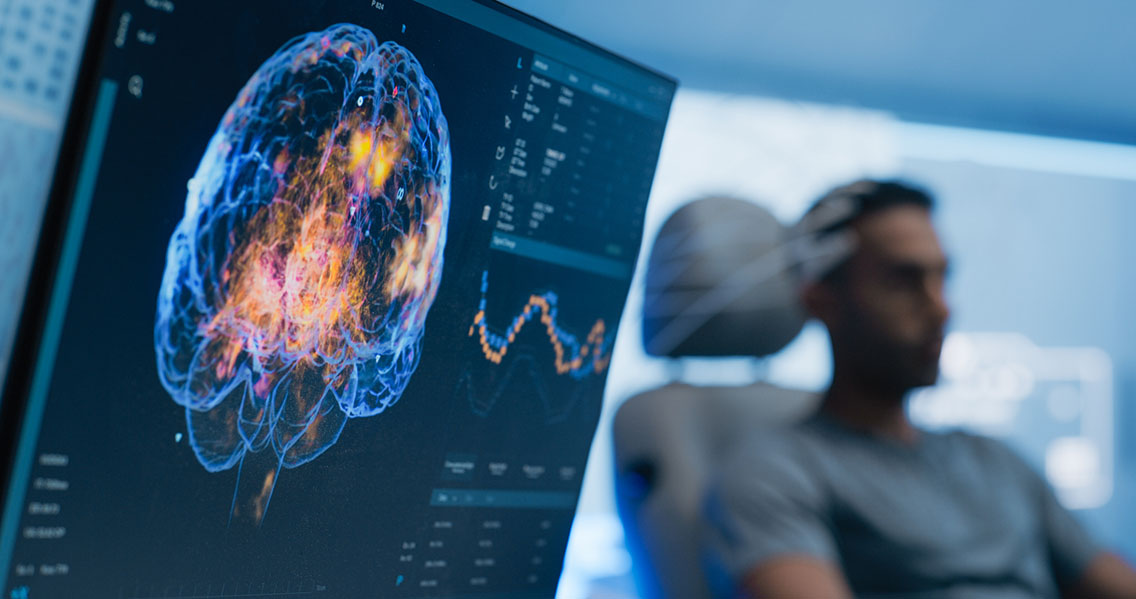
Understanding qEEG Testing at Brain Treatment Plano
When you come to Brain Treatment Plano, the first step isn’t treatment; it’s discovery. We want to see how your brain is functioning right now. That’s why we start with a qEEG, or quantitative electroencephalogram.
This simple, non-invasive test gives us a detailed look at your brain’s electrical activity, which allows us to design a treatment plan that’s truly personalized.
What Exactly is a qEEG?
A qEEG is sometimes called a “brain map.” By recording your brain’s natural electrical signals, we can chart your brainwave activity and compare it to what’s typical for your age and sex.
The result is a visual report that highlights where your brain may be firing too fast, too slow, or out of sync. Think of it as a roadmap showing us the patterns that might be contributing to your symptoms.
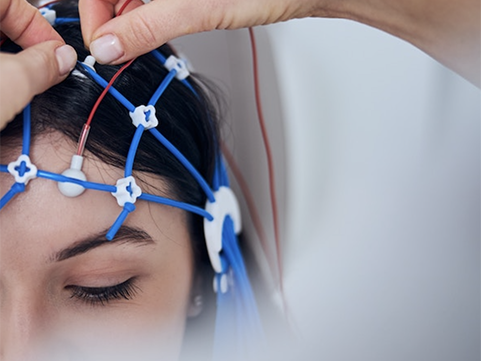
Why Brainwaves Matter
Brainwaves are the electrical rhythms that regulate how your brain communicates with itself and with the rest of your body. They influence how you feel, think, and function every day.
When these rhythms are balanced and well-coordinated, your brain can move smoothly between focus, relaxation, creativity, and sleep. But when they’re disrupted (too fast, too slow, or poorly synchronized), you may notice symptoms such as:
- Slower processing or cognitive decline
- Depression or anxiety
- Trouble sleeping
- Brain fog or forgetfulness
- Poor concentration or impulsivity
- Emotional ups and downs
The Different Types of Brainwaves
Your brain produces several types of brainwaves, each with its own role:
- Delta (1–3 Hz): The slowest brainwaves, essential for deep, restorative sleep.
- Theta (4–7 Hz): Light sleep and daydreaming; linked to creativity and imagination.
- Alpha (8–12 Hz): A calm, alert state—the balance point between relaxation and focus.
- Beta (13–30 Hz): Active thinking, problem-solving, and concentration; excessive beta can be linked to stress and anxiety.
- Gamma (>30 Hz): Fastest waves, connected to learning, memory, and information processing.
Each wave has its job, but when one or more are out of balance, the whole system can feel “off.”
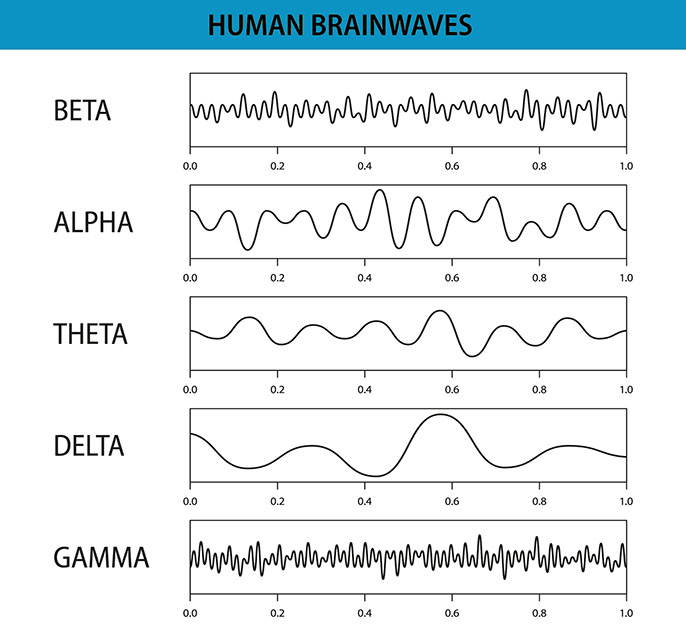
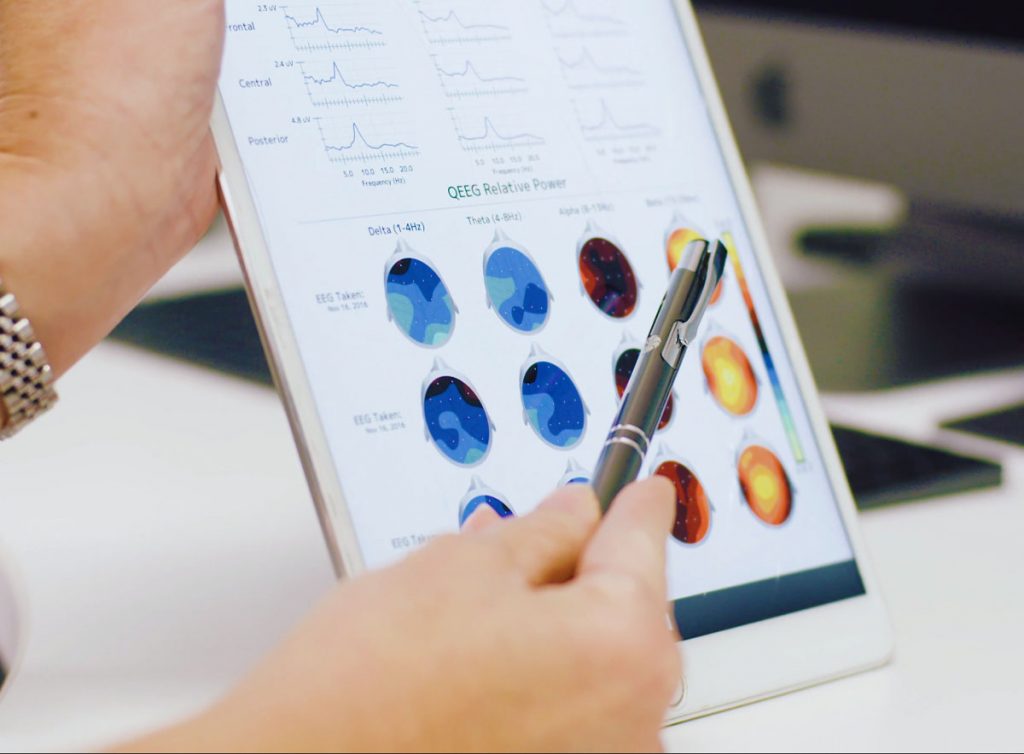
What the qEEG Brain Map Shows
During your evaluation as part of your Initial Analysis, we’ll go over your brain map together. Each chart provides a top-down view of your brain activity across different frequency ranges.
- Warm colors (orange/red): areas with higher-than-average activity
- Cool colors (blue): areas with lower activity
- Green: activity that falls within the expected range
This visual snapshot shows us where your brain is working harder than it should or not working hard enough. And the qEEG report guides us in creating your treatment plan.
Why Alpha Waves Are Our Focus
The qEEG lets us see all brainwave activity, but when it comes to MeRT® treatment, we pay special attention to alpha waves.
Alpha activity acts like the conductor of an orchestra, helping different parts of your brain stay in rhythm with each other. If your alpha waves are misaligned—too fast, too slow, or out of sync across regions—it can throw off mood, concentration, and sleep.
By pinpointing where your alpha activity is off balance, we can target treatment to restore healthier rhythms and improve how your brain communicates.
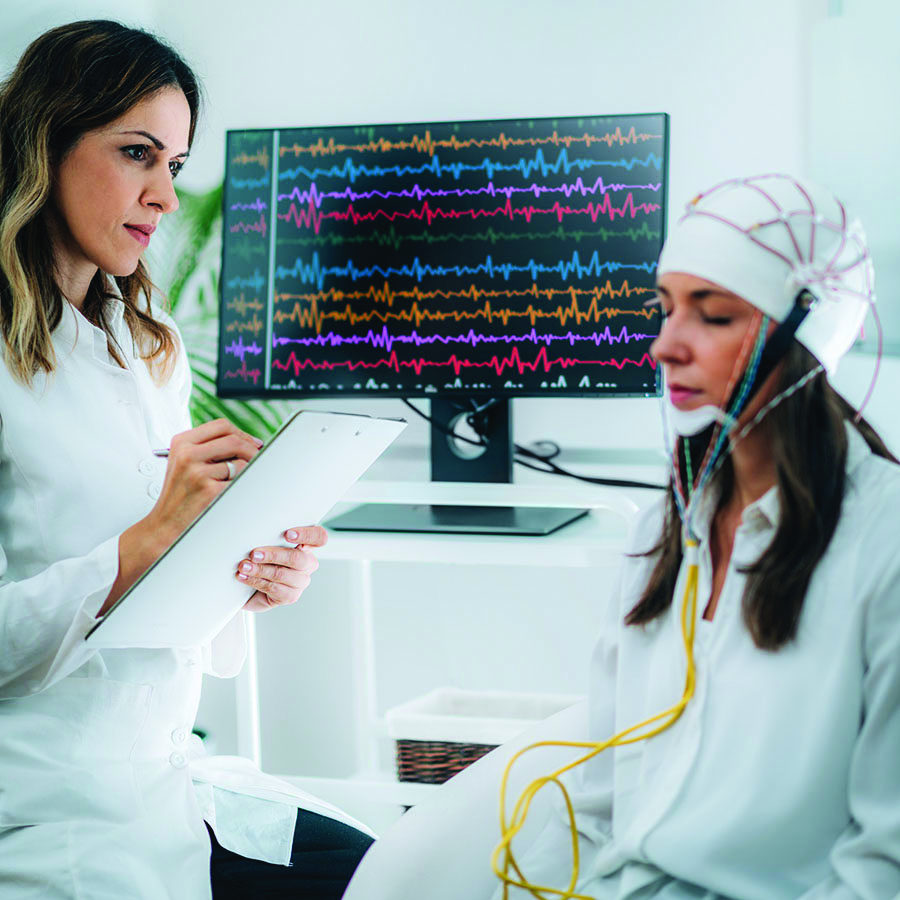
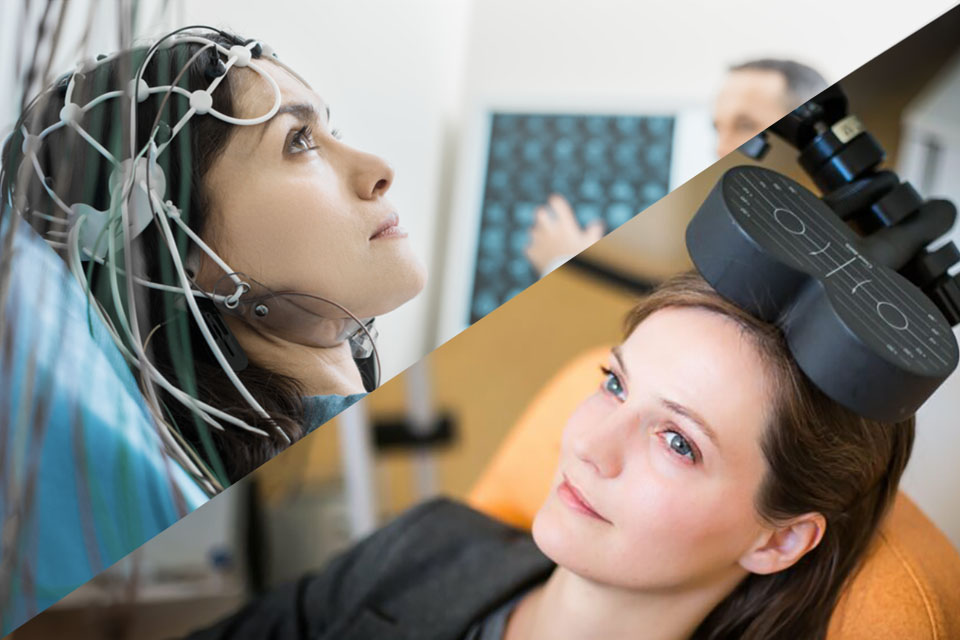
How the qEEG Process Works as Part of the MeRT Treatment Plan
During your evaluation as part of your Initial Analysis, we’ll go over your brain map together. Each chart provides a top-down view of your brain activity across different frequency ranges.
- Warm colors (orange/red): areas with higher-than-average activity
- Cool colors (blue): areas with lower activity
- Green: activity that falls within the expected range
This visual snapshot shows us where your brain is working harder than it should or not working hard enough. And the qEEG report guides us in creating your treatment plan.
Common Questions about the qEEG Process
Does it hurt?
No. The cap may feel snug, but the process is completely painless.
Do I need to prepare?
Just arrive with clean, dry hair and no hair products. Sleeping well the night before also helps give us the most accurate results.
How long does it take?
About 45 minutes to an hour, including setup. The brainwave recording itself is only 10 minutes.
Will I need more than one qEEG?
We do an initial test before treatment begins and then repeat it periodically to measure your progress and adjust your plan.
Find Out What Your Brain Can Tell You: Start with a Brain Map
If you’ve tried other treatments without lasting relief, a qEEG might give you the missing piece of the puzzle. It’s the first step toward creating a plan that’s built around your brain.
Call us for a free consultation, or fill out the form below, and we will contact you.


